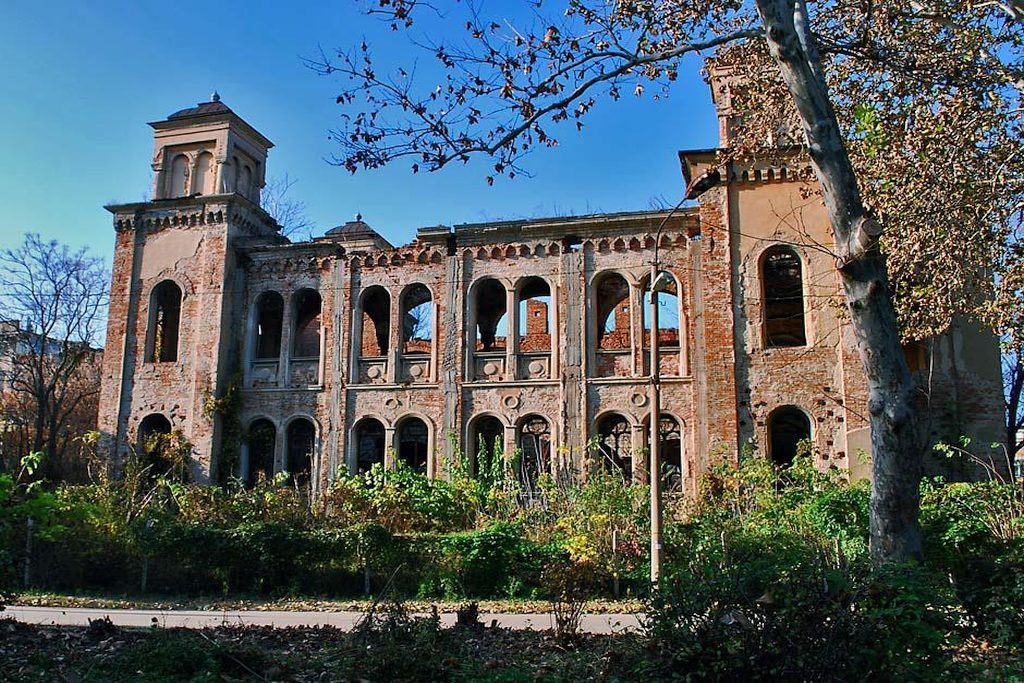

The synagogue in Vidin is the second historic synagogue or the third Hebrew temple in Vidin. It is located near Baba Vida fortress. The previous one was destroyed during the War of Liberation (1877-1878).
It was built in one year. The construction was carried out with the help of donations from local Jews – a large part of the population in the old neighborhood Kale as well as the Jews from all corners of the Principality of Bulgaria. It was officially opened on 28th of September, 1894 by Dr. Mordechai Grunwald, chief rabbi in Bulgaria. It is the second largest after the synagogue in Sofia, but is considered more beautiful.
Since 1950 the building is not used as intended, but as a warehouse, causing damage to its state at that moment – decades of, roofless, resulting in the collapse of the walls.
It is located in a trapezoidal parcel (with triangular cut, a sharp corner). The building is completely symmetrical, with an appropriate form, an apse basilica with three naves, a narthex, galleries and four towers. The interior dimensions of the praying hall are 21 x 10 meters.
It was built upon the model of the synagogue from Budapest, and the architects were known at the time as Ferdinand and Francesco. The construction of the altar (colored in blue, red and bronze) was made by Max Verity – Czech sculptor, lecturer at Vidin. The wood was delivered from Transylvania and Hungary and the lamps, chandeliers and ranks are from Vienna and other regions in Austria. The interior is colorful, with ancient Hebrew and classical architectural elements. The narthex is covered with cross vaults, the wall has two marble slabs and 2 bronze embossed with inscriptions in Hebrew. The three ships were separated by a thin arch, on columns, which are bronze, of cast iron. They have a base of Asia minor kind, and their body is channeled. The ornamentation includes spirals, Palmetto, colored acanthus leaves. The arcs are segmented.
The floor is paved with mosaic tiles. The altar was on the podium in the apse. It repeats probably the architecture of the ancient Hebrew temple – a central part with two towers, arches and columns, and above the altar – a symbol of the sun.
The nave of the praying hall, which has very good acoustic properties, is covered with a cylindrical vault with ribs and lateral naves and galleries – with cross vaults. Their color is blue with six pointed star painted in bronze. The altar was painted in blue, white, red and bronze. Inside the room creates a feeling of lightness and spaciousness. The main facade was impressive. It is determined by the black side towers. The main entrance is vaulted with a semicircular arc on two columns with high pedestals. The round window has a star with iron grating and is placed in the center of the arch. The four towers with arched windows are of stained glass and fine grid.
Since 1950 has lost its primary function and was used for storage, because of this, his condition was greatly damaged. In 1970 it began a major renovation in order to be accommodated (thanks to good acoustics) for symphony concerts. Today, the majestic building is in a extremely sad state – just a pale reminder of its glorious past. It needs total restoration, but currently there is no prospect for this process to begin soon.
